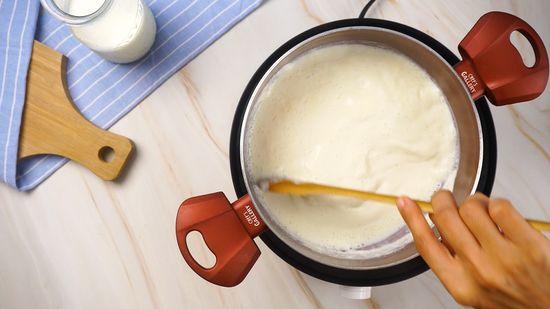A Tale from the Kitchen
In a small kitchen in the heart of a bustling city, a grandmother stands by her stove, gently stirring a pot of simmering milk. The air is filled with a comforting aroma reminiscent of warm custard and creamy soups from family dinners past. As the milk thickens and reduces, she shares a story with her granddaughter about how to make evaporated milk during times of scarcity. This versatile ingredient became a staple in their household. This humble process, born out of necessity, transformed their cooking, adding richness and depth to everything from soups to desserts.
The Essence of Evaporated Milk
Evaporated milk is a shelf-stable dairy product that removes about 60% of the water from fresh milk. This concentrated form of milk has a slightly caramelized flavour due to the heating process, which also extends its shelf life. It is commonly used in recipes that call for a rich, creamy texture, such as custards, sauces, and soups. Making evaporated milk at home is simple and requires only milk and a bit of patience.
The Ingredients and Equipment
To make evaporated milk, you need:
- Fresh whole milk (or any other type of milk, depending on dietary preferences)
- A heavy-bottomed saucepan
- A spoon for stirring
- A filter or cheesecloth (optional for a smoother texture)
The Process: Step-by-Step Guide
- Measure the Milk: Start with more milk than the amount of evaporated milk you want to end up with, as the volume will reduce significantly. For example, if you’re going for 1 cup of evaporated milk, start with about 2.5 cups of fresh milk.
- Heat the Milk: Pour the milk into a heavy-bottomed saucepan. Heat it over medium heat until it comes to a gentle boil, stirring occasionally to prevent the milk from sticking to the bottom of the pan.
- Simmer and Reduce: Once the milk starts boiling, reduce the heat to low. Allow the milk to simmer, stirring occasionally to prevent a skin from forming on top. This process can take 25 to 40 minutes, depending on the amount of milk and the heat level. The goal is to reduce the milk’s volume by about 60%.
- Check the Consistency: The milk is ready when thickened and has a creamy, slightly caramelized colour. You can check the consistency by dipping a spoon into the milk; it should coat the back of the spoon.
- Strain and Cool: If desired, strain the evaporated milk through a cheesecloth or fine strainer to remove any lumps or skin that may have formed. Allow the milk to cool, then transfer it to an airtight container. It can be stored in the refrigerator for up to a week.
The Nutritional Benefits and Uses
Evaporated milk is not only a versatile ingredient but also a nutritious one. It retains many nutrients in fresh milk, including calcium, vitamin D, and protein. According to the USDA, a cup of evaporated milk provides about 338 calories, 17 grams of fat, and 24 grams of protein, making it a rich source of energy and nutrients.
Evaporated milk can be used in various recipes, both sweet and savoury. It adds a creamy texture to soups and sauces, enhances the richness of baked goods, and serves as a key ingredient in desserts like flan and fudge. It can also be used as a substitute for cream or milk in coffee, providing a lower-fat alternative that still offers a creamy taste.
Historical and Economic Context
The invention of evaporated milk dates back to the 19th century, when refrigeration was not widely available, and fresh milk had a short shelf life. It was first produced commercially in the 1850s and quickly became popular due to its long shelf life and versatility. During World War II, evaporated milk played a crucial role in feeding soldiers, as it was a reliable source of nutrition that could be easily transported and stored.
Today, evaporated milk remains a staple in many households, especially in regions where fresh milk is scarce or expensive. According to a report by Market Research Future, the global evaporated milk market continues to grow, with a market size valued at approximately $1.7 billion in 2020 and projected to reach $2.5 billion by 2027.
Cultural Significance and Culinary Trends
Evaporated milk holds cultural significance in various cuisines around the world. In Latin American cuisine, it is a critical ingredient in dishes like tres leches cake, a beloved dessert. In the Philippines, it is used in sweet treats like leche flan and halo-halo. Evaporated milk in these dishes highlights its versatility and the global appreciation for this simple yet transformative ingredient.
Conclusion: The Timelessness of Evaporated Milk
The process of making evaporated milk is a testament to the ingenuity and resourcefulness of home cooks throughout history. Whether used in traditional recipes or modern culinary creations, evaporated milk remains a valuable and beloved ingredient in kitchens worldwide. Its rich, creamy texture and long shelf life make it a practical choice for everyday cooking and special occasions.














